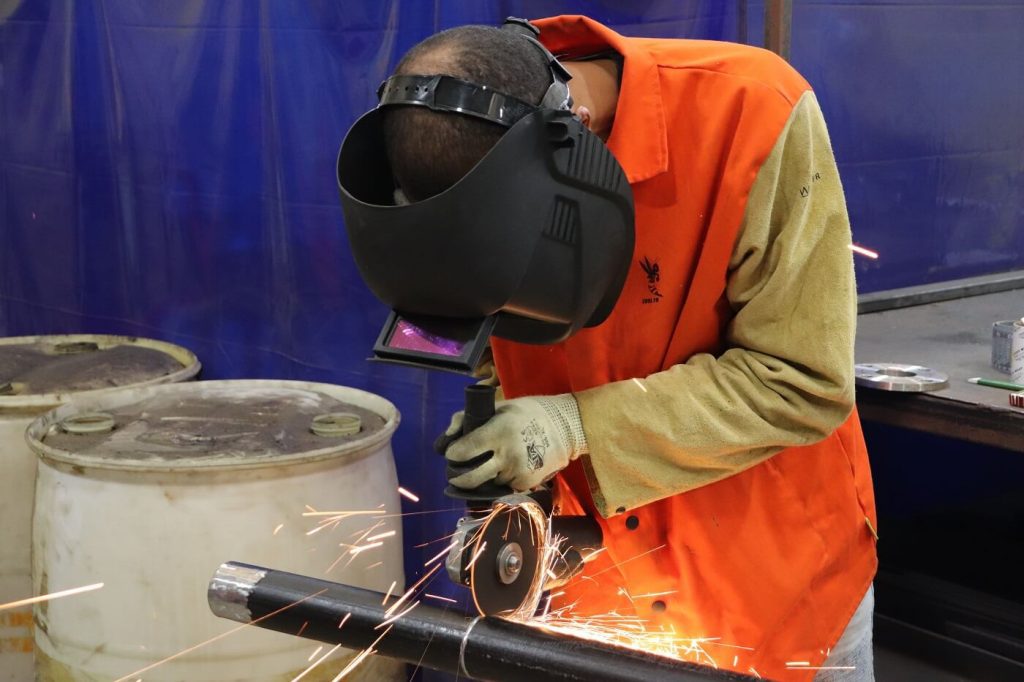If you are beginning as a welder at a fundamental level, welding consists of using force, heat, or a blend of both to collectively line two pieces of metal. However, if you were not familiar with welding, you would be surprised at the number of welder procedures and the science following each of those techniques.
Welding isn’t just an easy task but one that needs a high level of skill along with a practical understanding of fundamental physics, metallurgy principles, and chemistry.
The number of uses for welding is seemingly endless. Whether you’re a professional welder or merely a hobbyist, there is an ample abundance of possibilities for those that follow the welding basics and the fundamental principles of what welding is.
Besides, technology is affecting different jobs in welding in the same way as it affects every other area of our lives. Now welders can probably work in any water depth and also in space!
Welding is the joining of two things together using heat and filler material. The cartridge gets heats to the point where it melts and can pool between the two objects. Thus, it results in a strong joint which is also known as a weld.
For newcomers to professional welding, this is by far the common popular technique.
Stick welding works by enacting an electrical current through metal and an electrode. The method serves because the electrode melts. That causes it to connect with metal and form a joint. It is one of the popular types of welding because it is straightforward to learn.
Additionally, it may further be slightly to do with the point that tools for stick welding are more affordable than other types of welding equipment.
Like stick welding, MIG welding is quite simple to learn. It also works by supporting the filler wire into the welding light and choosing the speed you require it to come out. Indeed, it creates an arc that indicates you can run your wire straight onto the joint. Therefore, it results in a clean and strong weld.
In addition, oxidation blocks through the use of gas. Hence, MIG welding kits should be your preference for more expensive than stick welding if you look for more professional weld terminations.
It is the most challenging of basic welding methods and is usually reserved for a professional welder. Moreover, it operates in much the same way as MIG welding but concedes greater control beyond the arc and weld. That’s because you can constrain the temperature of the weld puddle, involving far greater precision. In addition, it happens in strong and aesthetically gratifying welds.

Welding education requirements vary by employer. Indeed, some firms want welders to own a high school diploma and wish to complete employer-based welding tests. Other employers watch for a certificate or undergraduate degree from vocational, technical, or community college. Welders may also discover techniques through welding courses.
Welding education programs may complete an Associate of Science in Welding, Certificate of Achievement, or Bachelor of Science in Welding Engineering. Besides, the formal education programs may take a few weeks to a few years to complete.
Students in a welding program discover the art of heating and shaping metals. Required classes may involve metallurgy, blueprint reading, advanced mathematics, welding symbols, welding practicum, and a pipe layout. Practices and techniques taught in welding classes include arc welding, bronzing, casting, soldering, and brazing.
Welding comes into use in several industries, including construction, aerospace, energy, and automotive. Furthermore, its usage varies in joining metals, thermoplastics, or wood for a diversity of applications. It is also put into use to produce artwork by a flourishing community of artists.
A welder is frequently a full-time employee recruited by a firm to maintain or construct specific constructions. Certainly, several portions create a solid weld and various methods to bond two parts of metal together. Thus, welding jobs are essential for every aspect of the community.
However, growing as skilled welders need you to know about various factors and techniques. The welding program can teach you all you need to know to start this rewarding career.
An apprenticeship program may turn out to be very beneficial considering this aspect! Many graduated students work in high-paying cities, including Carroll Park, Mill Creek, Haverford North, West Powelton, Mantua. If you think about starting your productive career in welding or improving your skills to qualify for a new position, PTTI is an excellent place.
Read More:
Don't miss PTTI's welding training!Discover Program

Don't miss out on the training at PTTI's welding program.
